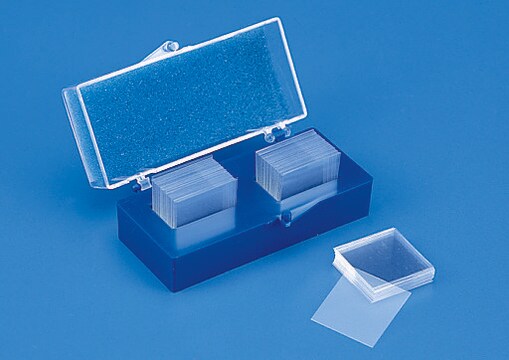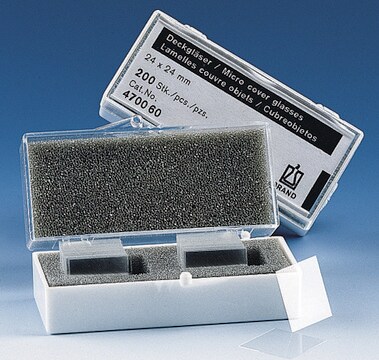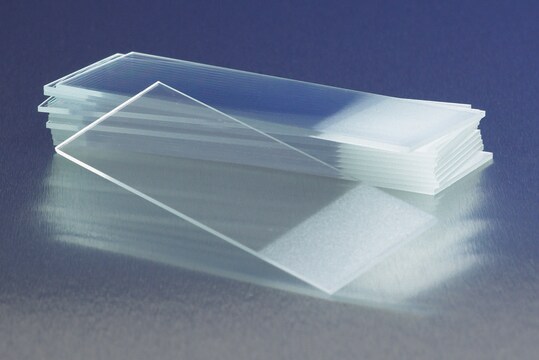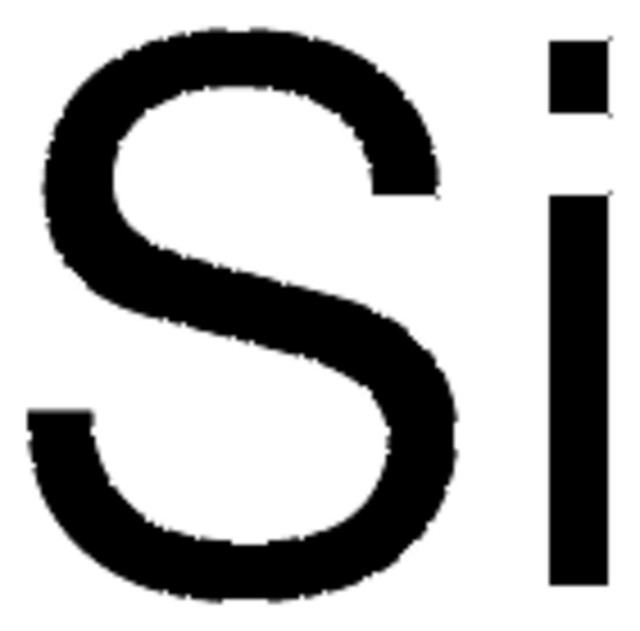643254
Gold coated glass cover slip
99.999% (Au), layer thickness 100 Å, L × W × thickness 22 mm × 22 mm × 130-170 μm, square
About This Item
Productos recomendados
Quality Level
assay
99.99% (Ti)
99.999% (Au)
L × W × thickness
22 mm × 22 mm × 130-170 μm, square
layer thickness
100 Å
refractive index
n20/587 1.523
matrix attachment
Titanium, as adhesion layer used to bind the gold to the borosilicate glass cover slip
SMILES string
[Au]
InChI
1S/Au
InChI key
PCHJSUWPFVWCPO-UHFFFAOYSA-N
¿Está buscando productos similares? Visita Guía de comparación de productos
Categorías relacionadas
Features and Benefits
Other Notes
Legal Information
Storage Class
13 - Non Combustible Solids
wgk_germany
nwg
flash_point_f
Not applicable
flash_point_c
Not applicable
Elija entre una de las versiones más recientes:
¿Ya tiene este producto?
Encuentre la documentación para los productos que ha comprado recientemente en la Biblioteca de documentos.
Los clientes también vieron
Artículos
1-Adamantanethiol (1-AD), an example in this spectrum of molecules with distinct chemical and physical properties, forms self-assembled monolayers (SAMs) on Au{111} that are displaceable when exposed to other thiolated molecules from solution, vapor, or contact due to weak intermolecular interactions in 1-AD SAMs.
Nuestro equipo de científicos tiene experiencia en todas las áreas de investigación: Ciencias de la vida, Ciencia de los materiales, Síntesis química, Cromatografía, Analítica y muchas otras.
Póngase en contacto con el Servicio técnico







